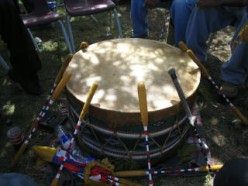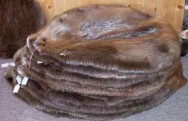 | Understanding Our Past CultureThe people of Webequie are traditional Ojibway, but most of us speak english. Our native tongue is Oji-Cree , and is commonly spoken by all. We are hard-working friendly people who have strong ties to the land, and embrace our heritage proudly. While we have many modern conveniences in our Community, we now practice many of the old ways and traditions, and strive to find harmony in our daily lives, by maintaing a balance between the old and the new. |
Our Native Practices
Our practices have now come full circle. We started out following our original cultural practices; hunting, trapping, fishing and gathering. We made our own clothing, dwellings and tools. We treated our sick and injured with herbal remedies, and freely and openly practiced our Spiritual beliefs. We were totally self-sufficient and happy with what the Creator had given us. With the attempted assimilation of our people by european influences , starting at the turn of the century, that state began to evolve into something quite different. We no longer had our complete freedom, and were exposed to many new things and behaviors, all strange to us, and many detrimental to our lifestyle.
We were expected to accept new ways, behaviors, and even foods. Our children were taken away to be educated in Missionary schools, and forced to turn away from their cultural heritage. They were not even allowed to speak their own language, and were severely punished for doing so. We were forbidden to practice our Native Spiritualism, and Pow-wows were punishable by law.
Fur Trading
|
Stack of beaver skins | We were exposed to a commerce system, previously unknown to us, and the availability of trade goods made us less reliant on our own skills, with the exception of hunting and |
Our original reliance on getting food only from the land was also diminished. We were forced to settle on reserves, located close to Missionary schools and fur trading posts, where we were exposed to new and often unhealthy foods and alcohol. We were exposed to previously unknown diseases, and many of us died.


